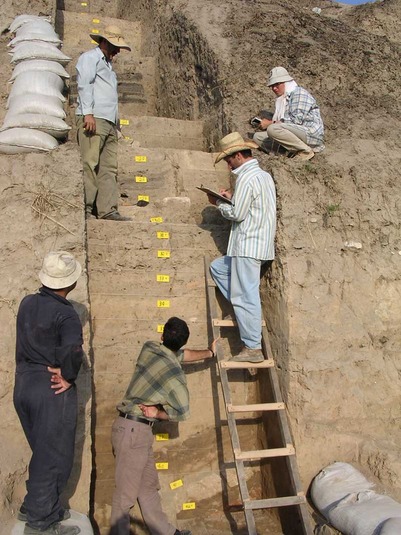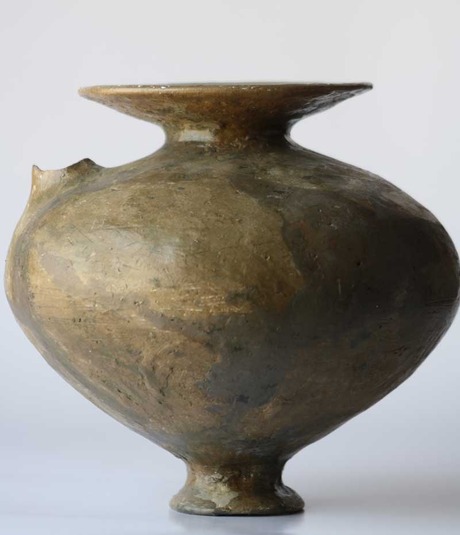Research History and first Results
Already back in the Old Stone Age this region was used by man, as the palaeolithic caves of Hotu, Kamarband (Belt-Cave) and Komishan show. Smaller find spots in the surroundings of Gophar Tepe, such as the Early Neolithic Togh Tepe and the presumably somewhat younger Abbasi Tepe, adumbrate that the coastal plain of Mazandaran will also have played an important role in the neolithification of North-Eastern Iran. The finds relate to both the Neolithic cultures of the Iranian highlands and to the Dzejtun culture of Southern Turkmenistan.
In Gohar Tepe itself the oldest finds date back to the later Chalcolithic. These are dark red pottery with geometrical paintings in black colour, which also appears at other find spots of the eastern Mazandaran and the neighbouring Gorgan Plain, and which we can date back to about the middle of the 4th millennium B.C.. This also marks the beginning of the production of a monochrome grey pottery with burnished decoration (Eastern Grey Ware), which is considered as a characteristic element of the subsequent Bronze Age in North-Eastern Iran. As the C-14 data from various sections prove, intense settlement activities started in the second half of the 4th millennium B.C. in Gohar Tepe, which resulted in an immense growth of the settlement. During the first campaign, a section of a wall with a boulder foundation and 17 preserved layers of mud bricks implied that this probably used to be the central site of the region during the Early and Middle Bronze Age. There used to be connections a.o. to the large settlements in the Gorgan Plain like Schah Tepe and Tureng Tepe, but also to find spots south of the Alborz Mountains, like Tepe Hissar. Some finds also indicate long-distance relationships until South-Eastern Iran (Shahdad) and the outland of Kopet Dagh in Southern Turkmenistan (Altyn Depe).

Section
Probably as early as in the second half of the third millennium B.C. the settlement started to decline. Tombs embedded in early settlement structures imply that the settled area heavily diminished. The reasons for this decline, which also occurred at numerous other find spots in Iran and Central Asia, are still unclear. Climatic changes might have been relevant here.
In the Late Bronze Age, Gohar Tepe was used above all as a burial ground. The numerous tombs of that time horizon substantially enrich our knowledge about the transition from the Bronze to the Iron Age in the Iranian Highlands already today. We expect to gain further insight into this topic in the future. A. Soltysiak from the Institute for Bioarchaeology of the University of Warsaw evaluated the human bone finds from the campaign in 2009. So far, we have not been able to determine the extension of the settlement, which presumably consisted of simple farms, neither for the Late Bronze nor for the subsequent Early Iron Age. A lot of archaeological record of the settlements, such as post holes, collapsed mud brick walls, door hinges or single mud bricks, show that this place was still densely inhabited also at that time.
Late Bronze Age tombs from the Iranian excavations
For the late second and early first millennium B.C. we have sound evidence for the correlation with the Iron Age find spots in Central and Northern Iran (e.g. Marlik or Gheytariyeh). Abviously in this period, a fortification was erected on a steep hill at the north-eastern border of Gohar Tepe. The German team had the opportunity to examine the corresponding settlement remains and tombs from Iron Age II and III during the campaign of 2009.
Apart from a few later finds, this meant the end of the utilisation of Gohar Tepe as a settlement and burial ground. This offers the advantage to the archaeologists working on site that they have a fairly easy direct access to the Iron and Bronze Age levels.

Vessel from a Late Bronze Age tomb


